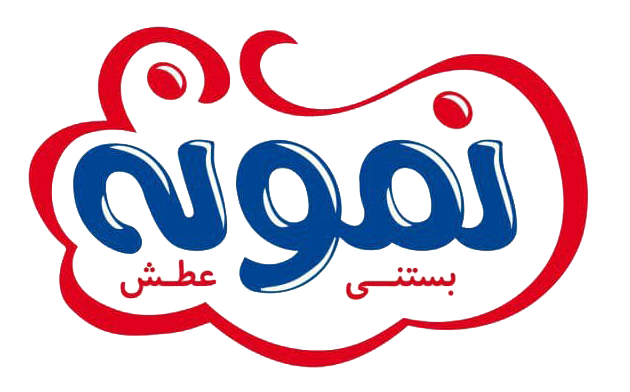Content
Nguyen (2011) identified a positive association regenerative finance crypto between CRISK and TQ, highlighting that a high CRISK corresponds to an elevated level of TQ. He et al. (2023) also confirmed the relationship between the level of CRISK and TQ. Moreover, when firms have a low CRISK, this can lead to negative operations, which are ultimately not conducive to increasing TQ.

2 Mediating effect of TQ on CRISK and FIN
The possibility for innovation applies to regulatory authorities and legislators who can be persuaded to create structures that fortify and level up ReFi practices. Environmental regeneration initiatives and financial investments are frequently included in ReFi. Efforts to reduce carbon emissions, rehabilitate ecosystems, and encourage environmentally friendly activities may Cryptocurrency wallet be included. And with regenerative finance the anticipated regulations and social factors favor its growth. This will be supported by business leaders, policymakers, academics, and citizens seeking alternatives. This enables long-term value generation for all to be achieved and the conservation and restoration of natural resources.
Who needs Regenerative Finance and why does it matter?
Patagonia, best known for its outdoor apparel, is more than just a company that sells goods; it’s a B Corporation that uses business for the greater good. A chunk of their profits goes to environmental issues and regenerative efforts. Patagonia shows how an organization can blend its financial success with a commitment to good environmental impact through funding initiatives for sustainability, preservation of the environment, and regenerative agriculture. Additionally, they have integrated regenerative techniques into their supply chain and actively encourage other https://www.xcritical.com/ businesses to do the same. Column (1) of Table 2 demonstrates that, at the 10% significance level, the coefficient of CRISK1 is positive.

Climate Disclosure and Climate Risk for Asian Companies
Users deposit funds into a pool (these users are called Liquidity Providers or LPs), and everyone can freely trade their funds with what’s in the pool. Exchange rates are calculated based on supply and demand by the DEX smart contracts, and conditions like trading fees are set transparently. Only transactions that match predefined criteria are approved — for example, which funds can be exchanged against each other.
- This enables long-term value generation for all to be achieved and the conservation and restoration of natural resources.
- These computer programs can run and maintain different financial products such as single and joint bank accounts, lending services, or currency exchanges.
- The positive relationship between the CRISK of firms facing high financing constraints and their FIN is more significant than that for firms characterized by low financing constraints.
- I first encountered this exciting world through the ReFi Talents program, an initiative that introduces entrepreneurs, technologists, and investors to solutions that merge finance, tech, and sustainability.
- Decentralization is a strategy used by ReFi to construct financial systems designed for regeneration.
Moreover, they encourage regenerative land-use practices and facilitate the organization of climate-saving endeavors. Regenerative Finance, at its core, is a financial philosophy focused on investments that not only generate profits but also contribute positively to social, environmental, and economic systems. It emphasizes the regeneration of communities and ecosystems, aiming to create a resilient and sustainable world. Regenerative Finance (ReFi) is at the forefront of a groundbreaking financial paradigm that has emerged recently. It offers a novel approach focusing on financial returns and positive social and environmental impact. This article explores the essence of Regenerative Finance, its historical evolution, working mechanisms, and purpose in fostering sustainable growth.
This seemed to be a logical choice that would allow the fund to deploy money quickly. Ten years later, these strategies have blossomed in many communities, giving new vocabulary to our ancestors’ practices. When as many interconnected and interrelated causes and effects are diagramed and mapped out, capital can be deployed more fairly. Overbearing repayment terms and collateral requirements extracting vital resources from communities can be replaced, and exclusionary credit standards can be revised.
Regenerative Finance , often shortened to “ReFi” — is an inclusive, transparent, and accessible alternative to conventional financial systems. In a regenerative financial system, economic activity benefits all of the system’s living participants, instead of unsustainably extracting resources, unfairly distributing profits, and ignoring the value of living ecosystems. (1) CRISK can affect the level of FIN through TQ, and there is a positive relationship between them. Firms with strong risk-taking own more financial assets, whereas those with weak risk-taking hold fewer financial assets. (2) The effect of CRISK on FIN differs significantly among firms with different financing constraints and industry types. Specifically, CRISK has a more significant positive relationship with FIN under high financing constraints.
There are systemic failures occurring across all sectors of society, and the easiest way to have somewhat of a smooth transition is to transition to a regenerative financial system. Traditional finance (TradFi) has generated enormous amounts of wealth and prosperity (at least for some) since the dawn of the Industrial Revolution. However, what is often left out of consideration is the less tangible and ancillary costs of all that generated wealth and societal development. A new financial movement has been growing over the past decade that takes into account living systems, communities, and the environment.
In finance, Web3 technologies facilitate transparent and secure transactions, making it easier to implement ReFi principles. Smart contracts, a hallmark of blockchain technology, enable the creation of decentralized finance (DeFi) platforms, allowing for the seamless execution of ReFi investment strategies. Built on blockchain technology, Web3 fosters a peer-to-peer network of interconnected applications, services, and platforms.
By directing resources toward initiatives and activities that adhere to these objectives, ReFi contributes to the creation of a more democratic and environmentally conscious society. It serves as an alternative to the profit-driven, short-term strategy, which usually ignores long-term consequences. It strives to eliminate intermediaries, central authority, and barriers to financial services to give customers immediate access. Because they are more interested with financial decentralization and inclusion, DeFi platforms may not necessarily focus on environmental regeneration. ReFi supports companies and people in improving the use of resources by reducing waste and prolonging product and asset lifespan to save money for fewer detrimental effects on the environment.
The natural environment is destroyed, resulting in the once vibrant, warm town descending into a bleak, lifeless landscape. Despite knowing the purpose of ReFi, this financial model is not an easy idea to understand. However, over 90% of us have heard a story about the tragedy of the commons and a world in need of a regenerative model of finance. Coffee plants are a natural, shared resource, but the overconsumption of this good has resulted in the endangering of 60% of the plants’ species. Similarly, as the population grows, the need for food supply commensurately increases. Evidently, overfishing of the Pacific bluefin tuna has resulted in a population level of approximately 3% of their original population.
Section 3 provides an explanation of model settings, data sources, sample treatments, variable definitions, and descriptive statistics. Section 4 examines the interplay between CRISK and FIN using benchmark regression analyses and robustness tests. Our new resource hub Risk Insights (formerly Risk Intelligence) keeps GARP Members informed with content across financial risk, AI, and sustainability and climate. Building a regenerative, solidarity economy within the existing one is a bit like trying to fit a square peg in a round hole—and we have had to adjust our practice along the way. For instance, the Our Power Loan Fund was first housed within a donor-advised fund (DAF) structure.
When these innovative initiatives maximize success, they also can maximize long-term profits in a way that leaves more for the many generations that can come after us. It builds on the principles of its predecessor, and interweaves them with theories and approaches from regenerative economics. ReFi expands on some DeFi principles and replaces others to realize the idea of a regenerative and inclusive economic system. Many traits of ReFi are derived from DeFi, for example, that people have control over their funds, and that applications, services, and transactions are transparent and openly accessible.

بدون دیدگاه